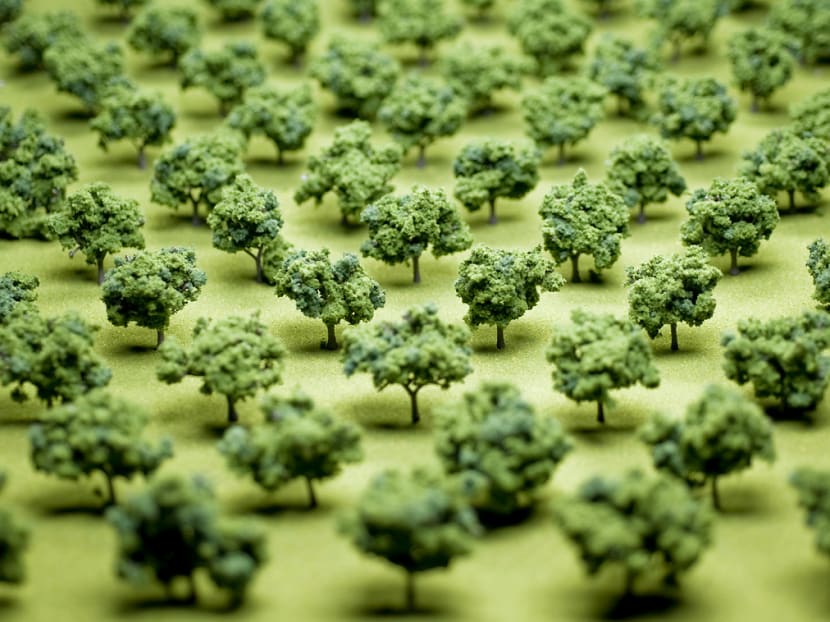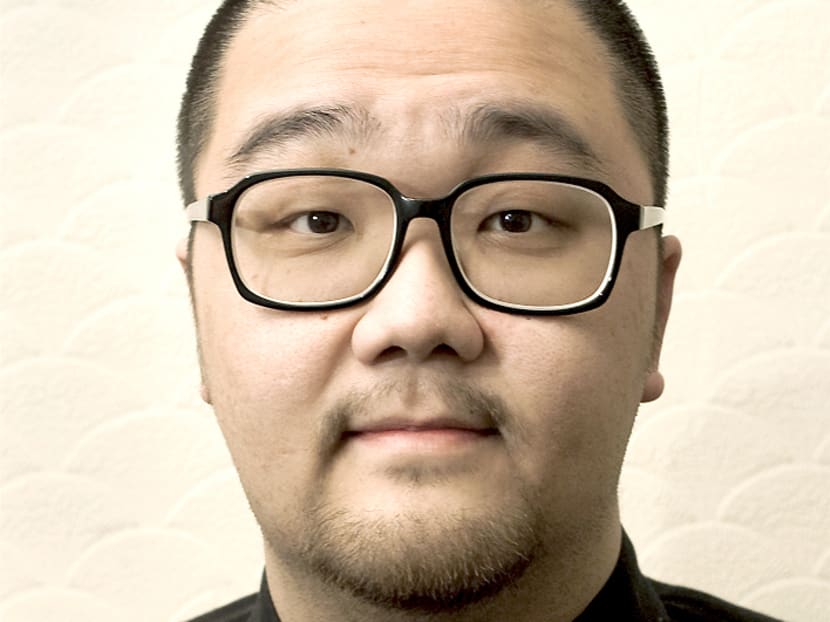The story of 800 iron trees
A photographer who takes "portraits" of objects, Ang Song Nian prefers to let the inanimate animate the story.


A photographer who takes "portraits" of objects, Ang Song Nian prefers to let the inanimate animate the story.
The 31-year-old artist has always felt an affinity for documenting people’s preoccupation “in terms of design, setting up and controlling” their environment. His first exhibition with the Singapore Art Week (SAW), is just that.
The nine-day festival will take place at various locations from Jan 17 to 25, 2015, and Song Nian's works will be displayed on Prinsep Street.
“My practice has always been about the way we try to control our direct environment. I've always believed that we are affected and influenced by the things we possess and own,” said the winner of Photography in Noise Singapore 2012.
Titled A Tree with Too Many Branches, Song Nian wants his exhibition for SAW to inspire the audience to see the “things that we see every day and take for granted”. Much like his previous works which have been exhibited both locally at the Singapore Art Museum and Centre for Contemporary Art as well as overseas, such as the Photo Espana Festival in Spain, and Lianzhou International Photo Festival in China.
Tell us about your exhibition at the upcoming Singapore Art Week in January.
A Tree with Too Many Branches looks at gardening, landscaping and planting. I am very intrigued by these processes that take plants out of their natural environment, transform them into everyday objects, then try to present them in a landscape that is designed to look natural. It says a lot about our preoccupation with our environment, which contains details that reveal many things about us. We are affected and influenced by the things we own.
What is the inspiration behind A Tree with Too Many Branches?
You could say my father, a man with green thumbs, inspired this exhibition. Many years ago, he brought home a young iron tree which had all but three stalks in varying heights. That was my first encounter with a potted plant and I was amused by its name. The characteristics of the iron tree also proved to be uncannily appropriate to its name; it grew steadily taller and bigger with each passing year. My father went on to design the little garden in our Bukit Panjang flat’s balcony which he fondly refers to as “the forest”.
What can we expect to see?
While conceptualising new works for this exhibition, which took me six months to put together, I decided to include an image of my father's little garden and juxtapose it with the arrangement of 800 potted iron trees. This installation is called How the Forest Follows Me Around. The other part of my exhibition is The Perfect Pattern, which consists of 10 photographs of miniature trees arranged in different shapes.
What do you wish for the audience to take away from your exhibition?
I've always wanted my works to make people ask questions. I hope the audience doesn't come to the show expecting any straight answers. I wish for the audience to leave with a renewed observation for the things and details that are just before our eyes.
Where can your exhibition be found?
It's at the new art space on Prinsep Street called DECK. Made up of 19 shipping containers, this unique independent art space will be hard to miss.
What are you looking forward to seeing and experiencing at the Singapore Art Week?
Personally, I am looking forward to the inaugural Utopia Interactive Arts Festival 2015 at the UOB Plaza. It’s a first-of-its-kind arts festival showcasing artworks and installations which encourage interaction from the audience.
You have won several awards, one of them being the Photography award at Noise Singapore 2012. How have the accolades influenced the way you create art?
These fortunate happenings have certainly allowed me to be more confident in pushing the limits of my practice. Somewhere along the way, I have slowly embraced the idea that my artistic output need not be confined to the conventional medium of photography, and this has led to my current direction of including installations and sculptural works into my exhibition.
Your previous works feature old TV sets, birdcages, standing fans and other paraphernalia of HDB dwellers. Where do the garang guni man in you stop and the artist in you begin?
Sometimes, the garang guni comes first, then the artist. At other times, it’s the other way around. There need not be too much of a distinction between which presides over the other because both roles feed on life. This documentation of life is not something that I consciously try to address, but I'm pleased to know that my works have been observed to do so.
Of all the works you’ve done, which is your favourite and why?
The next work that I've yet to make is my favourite because I get tired of looking at my works rather easily. I'm harsh on myself.
You have exhibited your works locally and overseas. How did the different audiences react to the pictures?
Surprisingly, not too differently. Most of the audience is interested in the lack of human presence in my works, despite my works being very much about people through objects.
How has the Singapore art scene changed in your opinion?
It definitely has changed for the better! The amount of support and opportunities given to artists by the National Arts Council has been very positive and encouraging. There's much more emphasis given to the development of local artists through the availability of various funding application options. The vibrancy of the local arts scene has also grown steadily in the last five years.
There’s also the recent addition of Nanyang Technological University's new Centre for Contemporary Art, which adopts a holistic approach towards arts and culture. Its position as a centre for critical discourse and experimental practices for Singapore and the region is definitely an important part of the arts infrastructure.
You were quoted on a website that “people have constructed their surroundings to suit their needs, their own characteristics”. What does your constructed surrounding say about you as an artist?
Mine reveals my fear for chaos.
Catch the Singapore Art Week, a multi-venue, nine-day festival from Jan 17 to 25 which includes gallery exhibitions, film screenings, art seminars, artist talks, pop-up events, art installations and more.
Produced by the TODAY Special Projects Team





